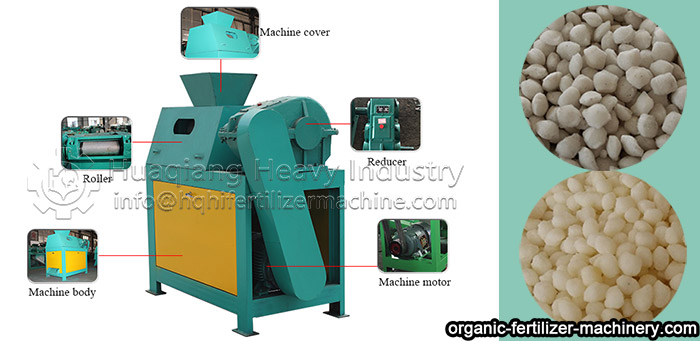The birth of any company is guided by the market and aimed at profit. For organic fertilizer equipment, what are the prerequisites for achieving scale profitability in its business process, and what are the main measures for achieving scale profitability for organic fertilizer equipment?
What are the necessary conditions for organic fertilizer equipment to achieve profitability
1. Market share or sales increase. Relying on a large number of people to generate easily shared fixed costs in the business process, reducing business risks, obtaining absolute competitive advantages, and transforming crises;
2. Sales volume and diversification. By relying on large transaction expectations and joint capabilities, we provide suppliers with multiple product outlets, and form a form of multi vendor and multi industry cooperation by adding value to joint enterprises, forming a large and stable product sales and value-added platform, which is most common in channels and retail;
3. Scientifically formulate development plans. At present, the technology and process of organic fertilizer processing equipment are showing a diversified, automated, and personalized development trend. It is necessary to formulate development plans from a high starting point, clarify goals, build a system, break through difficulties, and expand new industries.
4. Implement a linkage development strategy. With the deepening of environmental protection concepts and people’s increasing emphasis on food safety, the production of organic fertilizer processing equipment will usher in new development opportunities. To comply with the requirements of the new era and situation, we should integrate farmland conservation, scientific fertilization, high yield and quality, process improvement, and industrial development, and promote coordinated development.
5. Scientifically optimize industrial layout. In the past 10 years, the number of enterprises in China that commonly use composting technology to produce organic fertilizers has increased from 500 in 2002 to 4100 in 2013, and the number of scientific researchers in this field is also constantly increasing. Currently, we need to optimize industrial layout, improve the production and service system of regional organic fertilizer processing equipment, and promote the production and operation of family farms and farmers.
6. Strengthen policy guidance and publicity. We need to introduce relevant policies to promote the comprehensive utilization of agricultural waste. Strengthen publicity and education, guide agriculture to actively use organic fertilizers. We need to comprehensively implement the “fertile soil engineering” with the core task of improving soil organic matter from the perspective of farmland transformation and soil fertility improvement, laying a solid foundation for the sustainable development of agriculture, and achieving soil security, food security, food security, and ecological security.
Technology is an indispensable and important factor for us in modern times. It is with technology that human development is driven. Organic fertilizer equipment also developed rapidly with the addition of technology. When new technological elements were incorporated into organic fertilizer equipment, significant progress was made in the ability to handle livestock and poultry manure, and there was also a significant improvement in the granulation stage of later processing, For the reduction of manual labor in the use of organic fertilizer equipment, a complete set of organic fertilizer equipment with advanced technology is more cost-effective. In the future prospects of ecological agriculture development, the development path of organic fertilizer equipment can be described as a smooth sailing.






.jpg)

